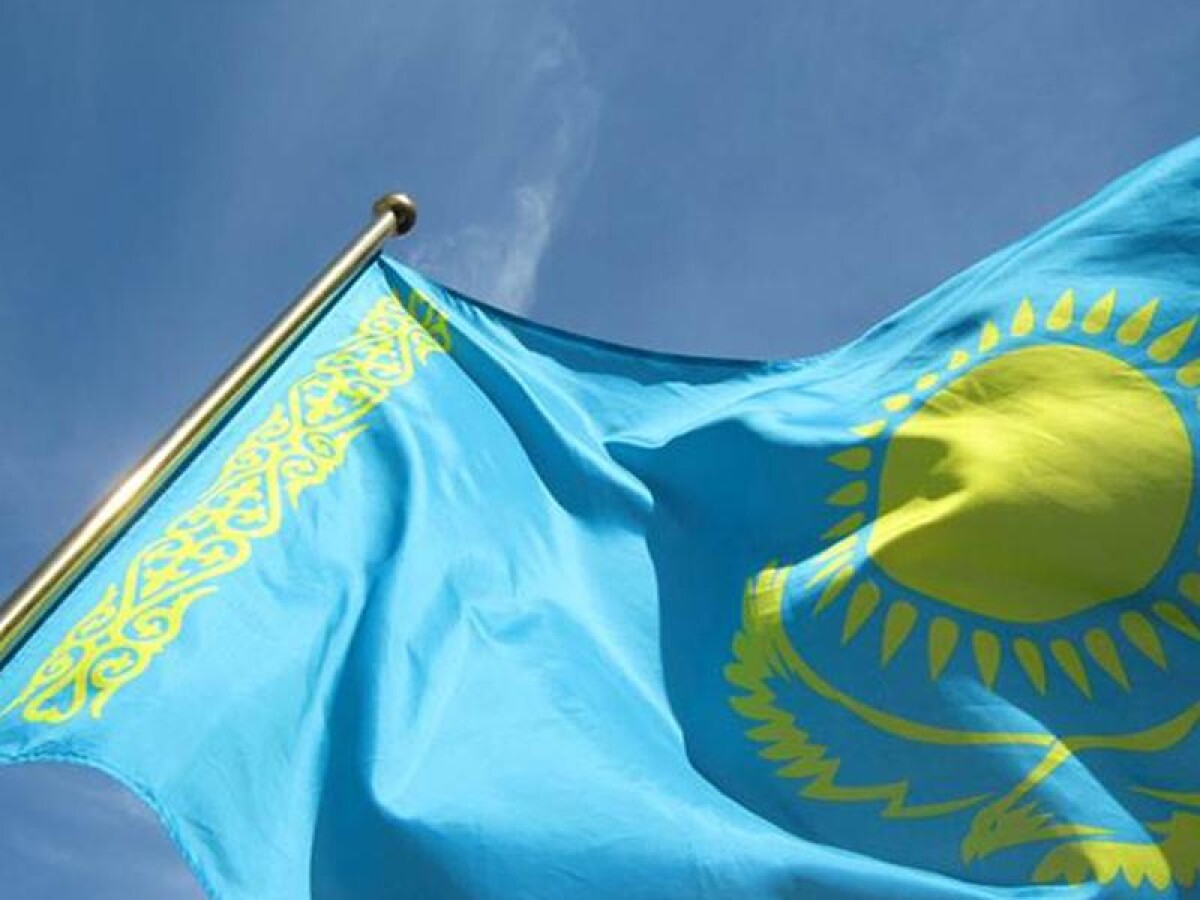
Today Kazakhstan is a prospering nation, and a country in which its own models of social and economic development, preservation and strengthening of public accord, as well as a stable political system are formed. Like all countries of the world, Kazakhstan has its own state symbols, which has become recognized in the world, and this symbolism has already become an integral part of the image of our country. All our state symbols are developed and approved in the period of independence, and they, in the language of heraldry, reflect the spiritual values of the people of Kazakhstan.
State symbols have their own ancient history. Undoubtedly, these symbols always carried a certain ideological load - in the signs and images of state symbols, ancient totems, religious symbols, distinctive signs of ruling dynasties and other meanings are ciphered. Of course, the state symbols of Kazakhstan, developed and adopted in the very recent past, include elements, primarily reflecting the people's desire for independence, their pride in their country, their diligence and peaceful spirit. For the first time, state symbols of sovereign Kazakhstan were presented to the public on July 6, 1992 in Almaty. Then there was not even the text of the National Anthem, the music of the anthem of the Kazakh SSR was used, and new words to it were approved only on December 11, 1992.
The author of the National Flag is the artist Shaken Niyazbekov. The sky-blue color symbolizes honesty, fidelity and impeccability. In addition, the ancient Turks revered the Eternal sky. Today, the sky-blue color on the State flag symbolizes a clear sky, peace and prosperity. The sun symbolizes wealth and abundance, life and energy. The golden eagle is perceived as a symbol of power, foresight and generosity. The strip of national ornament at the staff of the National Flag symbolizes the culture and traditions of the people of Kazakhstan.
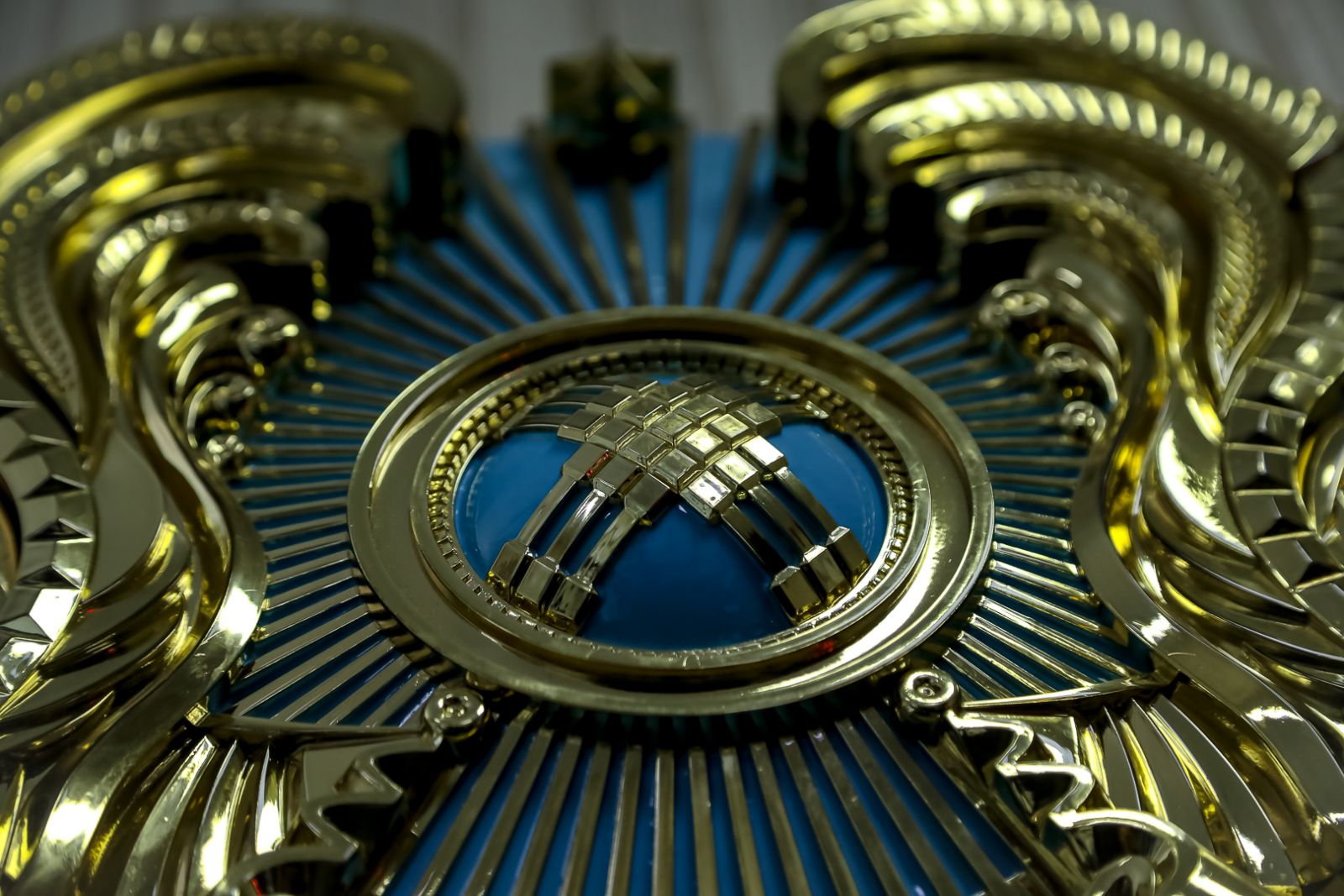 Today's National Anthem of Kazakhstan was adopted in 2006 in place of the former, created, as noted, on the basis of the anthem of the Kazakh SSR. The first President - Leader of the Nation, Nursultan Nazarbayev initiated the new Hymn. On January 6, 2006, at a joint meeting of the Majilis and the Senate, the draft Constitutional Law "On Amendments to the Decree of the President of the Republic of Kazakhstan having the force of the Law of the Republic of Kazakhstan" On State Symbols of the Republic of Kazakhstan "was considered. The deputies of the Parliament were provided with a footnote translation of the text of the new anthem.
Today's National Anthem of Kazakhstan was adopted in 2006 in place of the former, created, as noted, on the basis of the anthem of the Kazakh SSR. The first President - Leader of the Nation, Nursultan Nazarbayev initiated the new Hymn. On January 6, 2006, at a joint meeting of the Majilis and the Senate, the draft Constitutional Law "On Amendments to the Decree of the President of the Republic of Kazakhstan having the force of the Law of the Republic of Kazakhstan" On State Symbols of the Republic of Kazakhstan "was considered. The deputies of the Parliament were provided with a footnote translation of the text of the new anthem.
The parliamentarians read the letter of the Head of State, in which it was noted that the current anthem is not popular among Kazakhstanis, the song "Menin Qazaqstanym" is more popular. The President stressed that this song has long been recognized as a national anthem of the country, it's time to approve this status officially, you just need to make some adjustments to the text of the popular song. Amendments to the text were made personally by the President, and the Parliament decided that the authors of the text of the new Anthem are Zh. Nazhimedenov and Nursultan Nazarbayev.
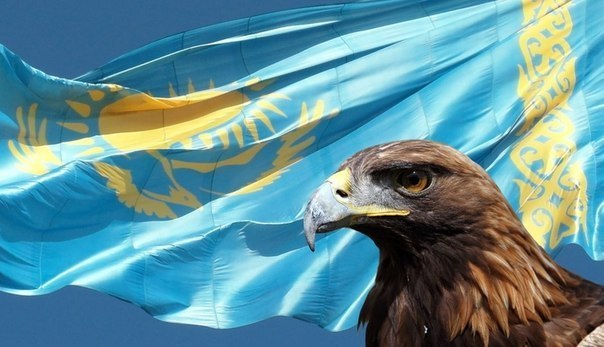 The adoption of the new National Anthem was accompanied by a lively public discussion. There were also opinions that a pop song can not be a hymn. Indeed, when, back in 1992, this song of Shamshi Kaldayakov on the poems of Zhumeken Nazhimedenov was offered as a hymn, this proposal was rejected by the commission with just such a motivation.
The adoption of the new National Anthem was accompanied by a lively public discussion. There were also opinions that a pop song can not be a hymn. Indeed, when, back in 1992, this song of Shamshi Kaldayakov on the poems of Zhumeken Nazhimedenov was offered as a hymn, this proposal was rejected by the commission with just such a motivation.
But, if you recall the story, then the creation of a hymn based on popular songs in the people - is not such a rare phenomenon. For example, under the influence of the Polish song "Mazurka Dombrovsky" in the beginning of the 19th century, a wonderful Croatian anthem "Croatia was not lost yet" was written. The hymns of Great Britain and the United States arose also on the basis of popular folk songs, and the British anthem - based on the French song.
The song "Menin Qazaqstanym" was written by then students of the Almaty Conservatory Kaldayakov and Nazhimidenov in the late 50's. It was not conceived as a hymn, its stellar destiny is the result of popular recognition and the will of the majority in society. She sang and sang with great pleasure in schools, kindergartens, at the opening ceremonies of important social, political and sporting events, at family celebrations.
In the approved official text of the anthem, consisting of 59 words, 25 words are new. The melody was saved completely. "The idea of the anthem should be vividly expressed that the wealth of Kazakhstani land and people opens the way to a better future for our descendants," the President said in his address to parliamentarians.
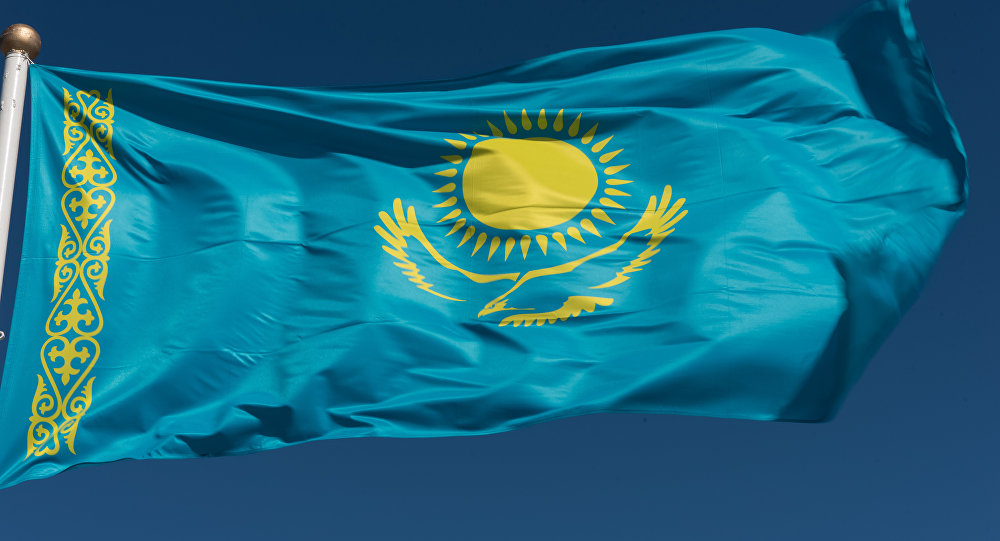 So, why do we experience excitement about the majestic sounds of the national anthem? Why is the heart filled with pride when we see the blue flag fluttering over the Ak Orda building? Why do feel patriotic when looking at the coat of arms with a golden shanyrak, covered with the wings of mythical horses? Most likely, because in these accurately found and beautifully executed images we see the symbols of our Motherland - Kazakhstan, the symbols of his glorious history, the memory of valor and deeds of ancestors, the pride in the independence, the belief in future prosperity.
So, why do we experience excitement about the majestic sounds of the national anthem? Why is the heart filled with pride when we see the blue flag fluttering over the Ak Orda building? Why do feel patriotic when looking at the coat of arms with a golden shanyrak, covered with the wings of mythical horses? Most likely, because in these accurately found and beautifully executed images we see the symbols of our Motherland - Kazakhstan, the symbols of his glorious history, the memory of valor and deeds of ancestors, the pride in the independence, the belief in future prosperity.
"Signs and symbols run the world," said the great Chinese philosopher Confucius. Thinking about this phrase, you fully understand the meaning of the symbol-symbol both in everyday everyday life of a person and at the level of the state.
A special role belongs to the national anthem of Kazakhstan (music by Sh. Kaldayakova, the words of Zh. Najimedenov, N. Nazarbayev), the coat of arms (authors Sh. Valikhanov, Zh. Malibekov) and the flag (author Sh. Niyazbekov). These symbols symbolize the ancient history of Kazakhstan, full of fame, victories and trials, as well as hope for the future.
The state symbols of our country represent the deep historical sources of the Kazakh statehood. The semantics and figurative structure of the flag and the coat of arms are many-valued saturated, while structurally harmonious, quite easily and easily accessible.
The most important state attributes, such as the standard of the President of the Republic of Kazakhstan, its breastplate, national currency, state awards, border marks, allow us to get into the world of state symbols of Kazakhstan that is familiar and at the same time unexpected.
A great contribution to its creation was made by the honored architect of the RK, the winner of the State Prize of the Republic of Kazakhstan, the leading artist of our country, Shot-Aman Valikhanov, who devoted a lot of efforts to various works in the field of heraldry. He created many republican symbols and emblems, including the emblem of the National Academy of Sciences of the Republic of Kazakhstan, the International Fund of Abylai Khan, the Kazakh Society for the Protection of Historical and Cultural Monuments (the emblem was highly appreciated in the Moscow Almanac of Arts in 1976), the medal "The Man of the Century" , "Man of the Millennium" and many others. He also developed projects for the emblems of Almaty, the honorary citizen of Almaty, the Otan orders, Altyn Kyran, Parasat, Kurmet and Astana.
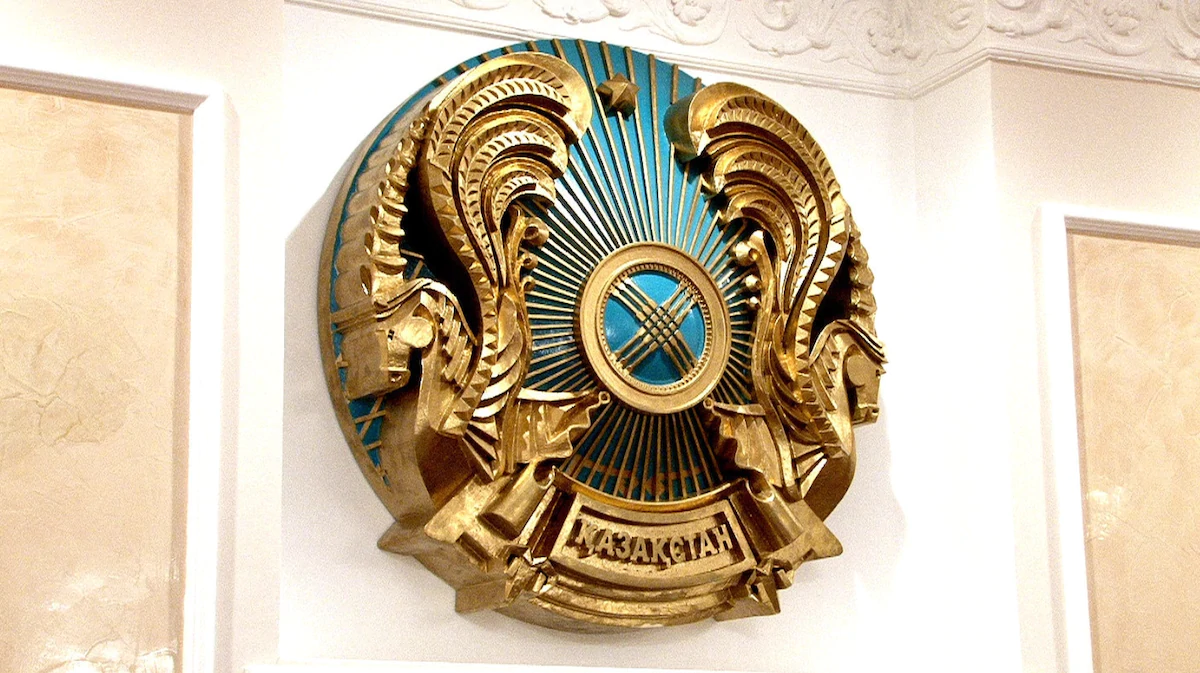 Let us recall the history of the creation of the State Emblem of the Republic of Kazakhstan. The very term "coat of arms" means, in addition to the well-known interpretation of the German word "inheritance" and the Polish not-emblem, also "a distinctive sign inherited by kings and rulers of the state, territories and various types of property", it introduces us into complete puzzles and the encrypted information of the world of high symbols.
Let us recall the history of the creation of the State Emblem of the Republic of Kazakhstan. The very term "coat of arms" means, in addition to the well-known interpretation of the German word "inheritance" and the Polish not-emblem, also "a distinctive sign inherited by kings and rulers of the state, territories and various types of property", it introduces us into complete puzzles and the encrypted information of the world of high symbols.
The key symbol of the State Emblem of the Republic of Kazakhstan is the image of a shanyrak, from it, in the form of direct sunlight, yuks emanate (the yurt supports). They are surrounded by the wings of mythical horses, at the bottom - the name of the country "Kazakhstan". The circle, in the space of which all these multi-valued symbols are united, simultaneously embodies the cosmos and unity of the country. The symbol of shanyrak in the traditional consciousness of the Kazakh people is associated with many concepts dear to the heart. It also reflected such an important feature of the national mentality as the ability in everyday life to feel involvement in the universe, to feel itself in unity with the world of all mankind. Therefore, the shanyrak of our State Emblem is also the hearth, the symbol of why the house, and the circle of the sun and the cosmos, the circle of the endless stream of history and the beautiful future of the country.
Thinking about the origins of the image of winged horses, we again plunge into the pure and life-giving springs of our culture. They come to the memory of the winged horses on the headdress of the Golden Warrior, the ancient and timeless traditions of the Kazakh horse-nomadic civilization, where the horse is not just a faithful friend and comrade, but also the personification of such qualities as courage and loyalty, strength and independence, pride and will to victory. The wings of horses seem to carry our arms to freedom and prosperity, carry the idea of pure thoughts and free flight of a young independent country. And the coat of arms crowns the image of a five-pointed star. This is a kind of our common guiding star, illuminating the noble and democratic path of Kazakhstan through all the difficulties and thorns of life.
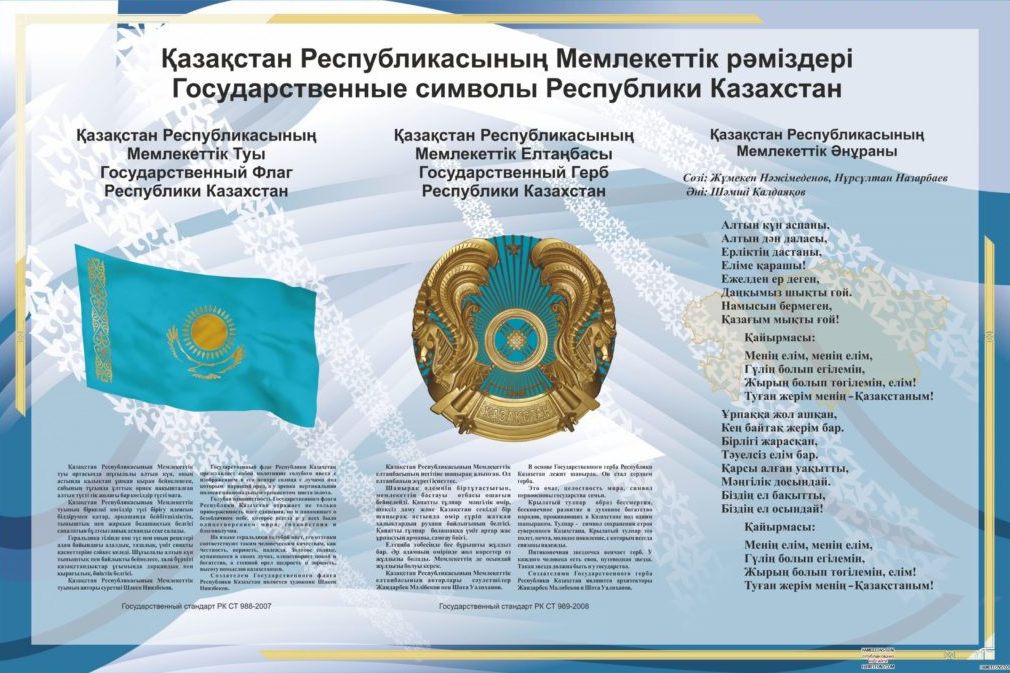
When considering several variants of the standard on January 18, 1993, Elbasy drew attention to the image of "dzhigit" on the winged snow leopard as a key element of the future presidential flag. His opinion happily coincided with the opinion of the authors of the project. For many years, namely from 1995 to 2012, in this version the standard existed as an inspiring force, as an original symbol of freedom, victory, independence. In 2013, it was changed by transferring the State Emblem to the banner of the image. In this form it exists to this day.
On the eve of the celebration of the Day of State Symbols, one can not help recalling the Monument of Independence, which was erected on the main square of Almaty and became a single symbol of the country, independence, a metaphor for the unity of the past, the present and the future of Kazakh history, culture and statehood. A complex architectural and sculptural complex is the result of the work of a whole group of famous Kazakh architects and sculptors. Its authors are Sh.Valikhanov, the head of the creative team, as well as the sculptors A. Zhumabay, N.Dalbai, K.Suranchiev, the architect K.Zharylgapov. Among the co-authors are architect K.Montakhaev, sculptors M.Mansurov, A.Bayarlin, K.Satybaldin. The initiator and inspirer of the creation of this monument was the head of our state N.Nazarbayev.
The connection of modernity with the national history is the main feature of this complex. The reliefs and kulpytas surrounding the stele contain a consistent sculptural story about our history, glorious victories and bitter times, the greatness and heroism of the Kazakh people, the years of great disasters, national liberation movements, wars, victories, the events of December 1986 and the long-awaited declaration of independence. The words of the president of the RK are also inscribed: "Only peace and the consent of society ensure the right of every person to a decent life and work." Freedom is not self-will, but the triumph of justice and law. " They seem to crown the centuries-old wisdom of our people.
Today, the national anthem, the coat of arms, the flag, the standard of the first president are important external signs that represent our country and at the same time powerful national symbols that breed deep patriotic feelings. They figuratively convey the history and destiny of the Kazakh people, and their perceptions about the world, man and society.
It seems that at present the coat of arms of Kazakhstan is one of the most beautiful arms among the emblems of modern states. He adequately represents our country at the highest state level and is a source of pride for all its citizens, patriots of their country. Our proud flag also perfectly fosters a sense of patriotism and the value of freedom and independence. The raised and chased lines and melody of our anthem are addressed to the heart of every Kazakhstani.
27 years of Kazakhstan's independence as an independent democratic state have passed, and the modern economic and cultural achievements of our country, its international authority, international consent and stability allow us to state with pride that over the years the republic has achieved a lot. These achievements, supported by a number of powerful and notable artistic symbols, allow Kazakhstan to confidently go into the future with a head held high.
